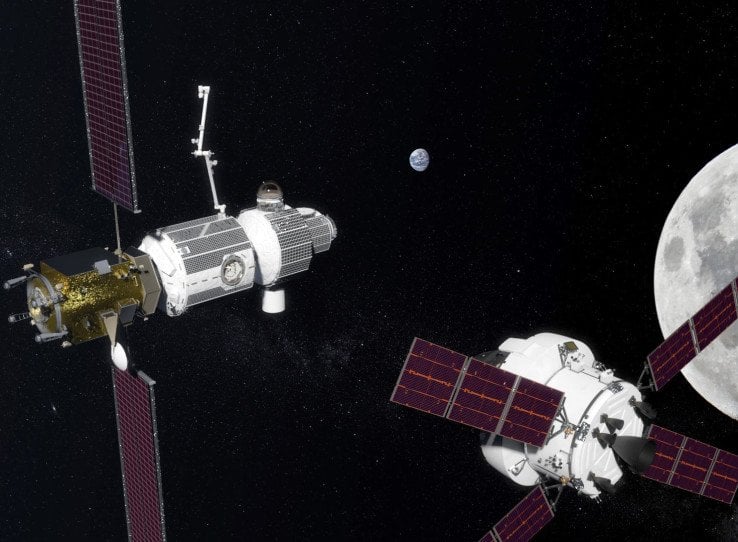On September 27th, NASA officially announced that it will collaborate with the Russian space agency, Roscosmos, in the development of a moon-orbiting space station in the near future. Such a station will allow easy travel to further locations such as Mars, as well as facilitating research on the lunar surface. This agreement demonstrates NASA’s belief that the key to future space exploration is cooperation: firstly, this project is expected to combine the efforts of multiple space agencies and aerospace companies such as Boeing; and secondly, having a space station like this in place will make it much easier to build missions on the efforts of multiple different groups, since supplies and components for missions can be delivered to the station at different times from different suppliers.
The agreement follows a March press release in which NASA indicated that they were researching the possibility of a ‘deep space gateway’ – a station above the moon where they could pool their resources and send off missions to other locations around the Solar System – Mars, of course, springs to mind, but this could also include the asteroid belt and the moons of the gas giants, which represent a vast range of environments including liquid water.These missions would be performed by reusable spaceships, which may never have to visit the surface again once in operation, vastly reducing the quantity of fuel required.
Now, the space agency has officially agreed to work together with Roscosmos, as well as commercial aerospace companies, to make this goal a reality. NASA and Roscosmos together signed a statement at the 68th International Aeronautical Congress in Adelaide that “reflects the common vision for human exploration that NASA and Roscosmos share”, announcing Roscosmos’ intention to work with NASA on the deep space gateway concept and bring their Russian commercial partners onto the playing field as well. As well as this agreement, NASA has been awarding contracts to companies including Boeing and Lockheed Martin to develop and test possible habitation systems for their astronauts.
The American space agency’s parallel efforts to include both Roscosmos and engineering companies in this project demonstrates two factors in how they are approaching space exploration at present. Firstly, they are willing to invest resources now to facilitate frequent and efficient missions in the future. Secondly, they believe in setting up a platform for a genuine space industry, so that in future government-funded agencies won’t have to do all the heavy lifting.
The possible moon-orbiting space station is something that will take a lot of resources to build initially, but will vastly reduce budgets if NASA intends to send out repeated deep space missions in future. Since most of the fuel and much of the equipment for space travel is used just to get off the Earth’s surface, projects based in the deep space gateway using a reusable craft would be very cost-effective for NASA. Combining this with the futuristic Solar Electric Propulsion system, which uses solar energy instead of exploding fuel to accelerate its propellant and is already in use today, future research of the asteroid belt or Saturn’s rings could require almost no non-reusable resources at all.
As well as a commitment to efficiency and frequency in future projects, NASA has also now shown that they want the future of space travel to be in the hands of many small organisations rather than a few governments. The space station concept would create a rich environment for independent aerospace groups, with big one-off missions replaced by a constant flow of small cargo shipments and equipment upgrades that commercial partners could handle. This is something we’ve already seen happen with the International Space Station, with SpaceX’s Dragon rockets now regularly delivering supplies, including ice cream. As well as allowing commercial groups to help with deep space missions, the lunar station will itself be made with the direct assistance of NASA and Roscosmos’ friends in the aerospace industry.
The world may not have sent humans any further since 1969, but our attitudes about how to travel in space have come a long way, and the agreement made in Adelaide last month shows it. NASA wants to lay the foundations for a space industry in which everyone can contribute to the same goals, and replace expensive, infrequent launches with a constant stream of small, efficient trips. And once we can get the infrastructure in place – hey, maybe we’ll finally get someone on Mars.



